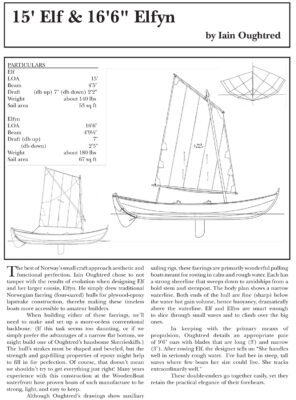
15' Elf & 16' 6" Elfyn
The original print version of this article can be viewed as a PDF or purchased from the WoodenBoat Store.
Join to view PDF Purchase 16'6" Elfyn PlansThe best of Norway’s small craft approach aesthetic and functional perfection. Iain Oughtred chose to not tamper with the results of evolution when designing Elf and her larger cousin, Elfyn. He simply drew traditional Norwegian faering (four-oared) hulls for plywood-epoxy lapstrake construction, thereby making these timeless boats more accessible to amateur builders.

Particulars
When building either of these faerings, we’ll need to make and set up a more-or-less conventional backbone. (If this task seems too daunting, or if we simply prefer the advantages of a narrow flat bottom, we might build one of Oughtred’s handsome Skerrieskiffs.) The hull’s strakes must be shaped and beveled, but the strength and gap-filling properties of epoxy might help to fill in for perfection. Of course, that doesn’t mean we shouldn’t try to get everything just right! Many years experience with this construction at the WoodenBoat waterfront have proven boats of such manufacture to be strong, light, and easy to keep.
Although Oughtred’s drawings show auxiliary sailing rigs, these faerings are primarily wonderful pulling boats meant for rowing in calm and rough water. Each has a strong sheerline that sweeps down to amidships from a bold stem and sternpost. The body plan shows a narrow waterline. Both ends of the hull are fine (sharp) below the water but gain volume, hence buoyancy, dramatically above the waterline. Elf and Elfyn are smart enough to slice through small waves and to climb over the big ones.
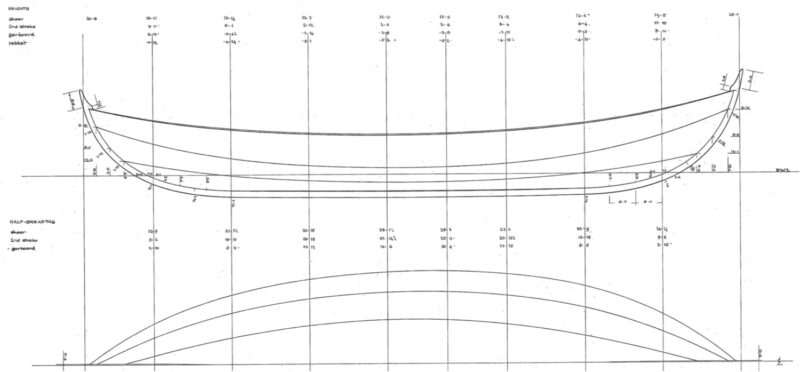
Heights and half-breadths.
In keeping with the primary means of propulsion, Oughtred details an appropriate pair of 9’6″ oars with blades that are long (3′) and narrow (3″). After rowing Elf, the designer tells us: “She handles well in seriously rough water. I’ve had her in steep, tall waves where few boats her size could live. She tracks extraordinarily well.”
These double-enders go together easily, yet they retain the practical elegance of their forebears.
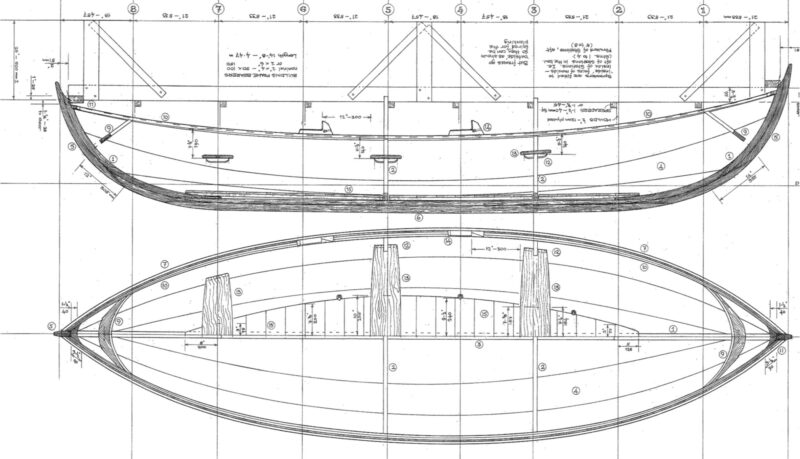
Glued plywood-lapstrake construction brings this sophisticated hull within range for an amateur builder.
The 16′ 6″ Elfyn faering design plans include 7 sheets plus 17 pages of additional notes from the designer. No lofting is required, and this one is ideal for an intermediate builder.
Plan 155 & 156
DESCRIPTION
Hull type: Round-bottomed, double-ended
Rig: Sprit (Elf), balance lug (Elfyn)
Construction: Glued-lapstrake plywood
PERFORMANCE
Suitable for protected waters
Intended capacity: 1-3
Trailerable:
Propulsion: Sail, oars
BUILDING DATA
Skill needed: Intermediate
Lofting required: No
PLANS DATA
No. of sheets: 8 (Elf), 7 (Elfyn)
Supplemental information: 16 pages
Level of Detail: Above average
Plans Format: Print
Cost per set: $204 (Elf), $225 (Elfyn)
Related Publications:
Clinker Plywood Boatbuilding Manual
How to Build Glued-Lapstrake Wooden Boats
Completed Elfyn Images
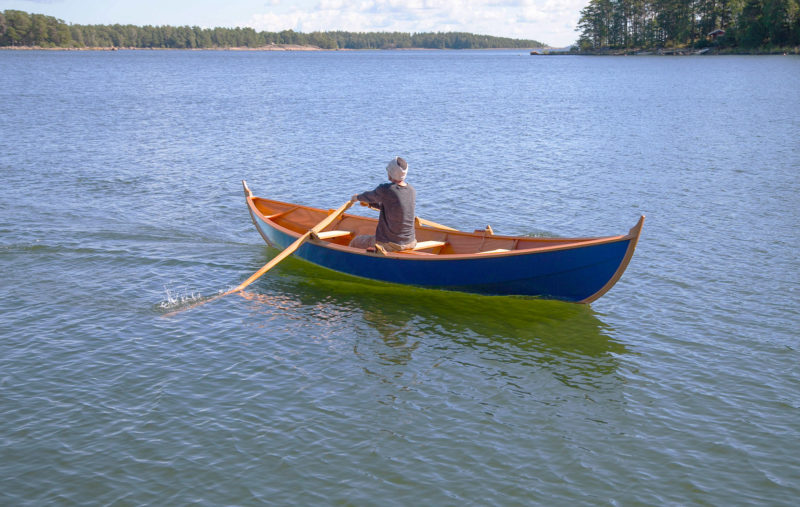 Rami Salle
Rami SalleUnder oars, the Elfyn slides effortlessly with proper longitudinal trim. Rowing alone, some ballast, about 20 to 30 lbs, put where it’s needed, whether in the bow or stern, will keep the keel level.
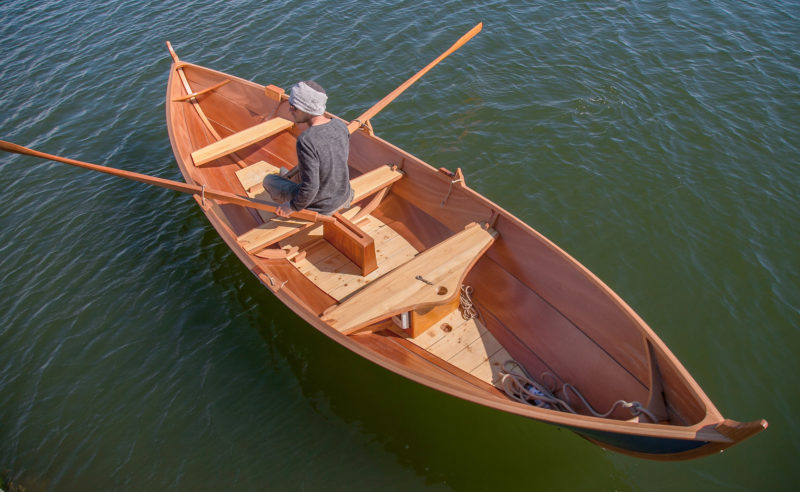 Rami Salle
Rami SalleThe centerboard case is located a bit off-center, alongside the full-length keel. If you choose to install the daggerboard, its trunk will take up space in the middle of the boat. On the after edge of the forward thwart you can see the cleats we added, one for the rope shroud and the other for the halyard, doubling as the other shroud. Another wooden cleat was installed in the after edge of the center thwart for the sheet.
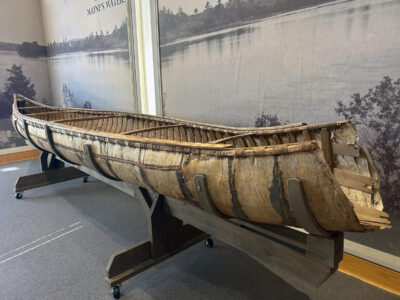
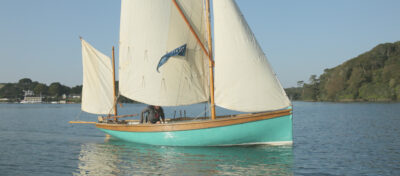
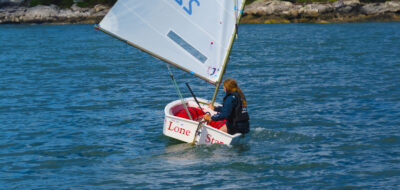
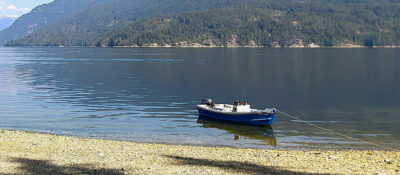
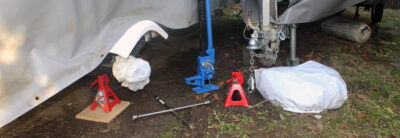
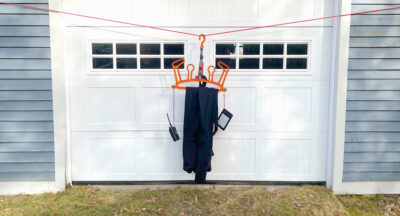
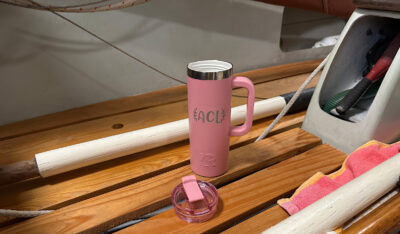
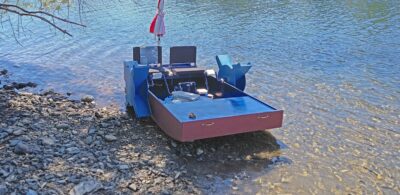
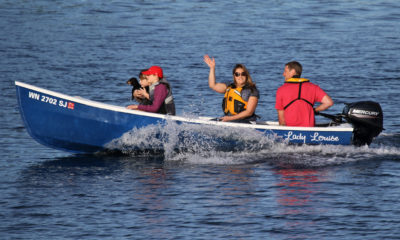
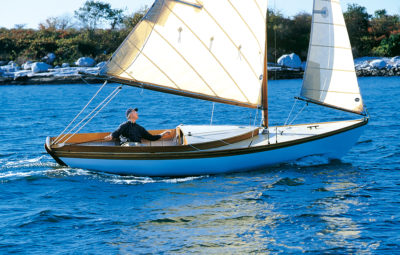
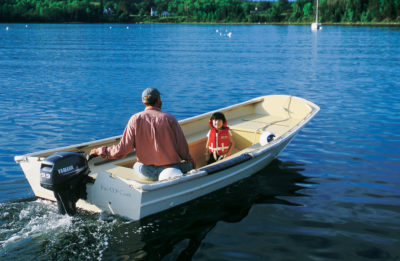
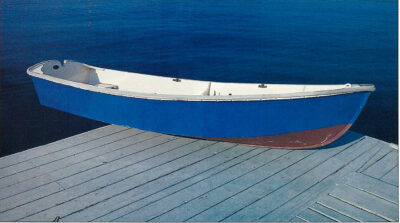
Many similarities to the CLC Skerry (I built and own one), or vice-versa, though the Skerry is decked, fore and aft, with watertight storage compartments.